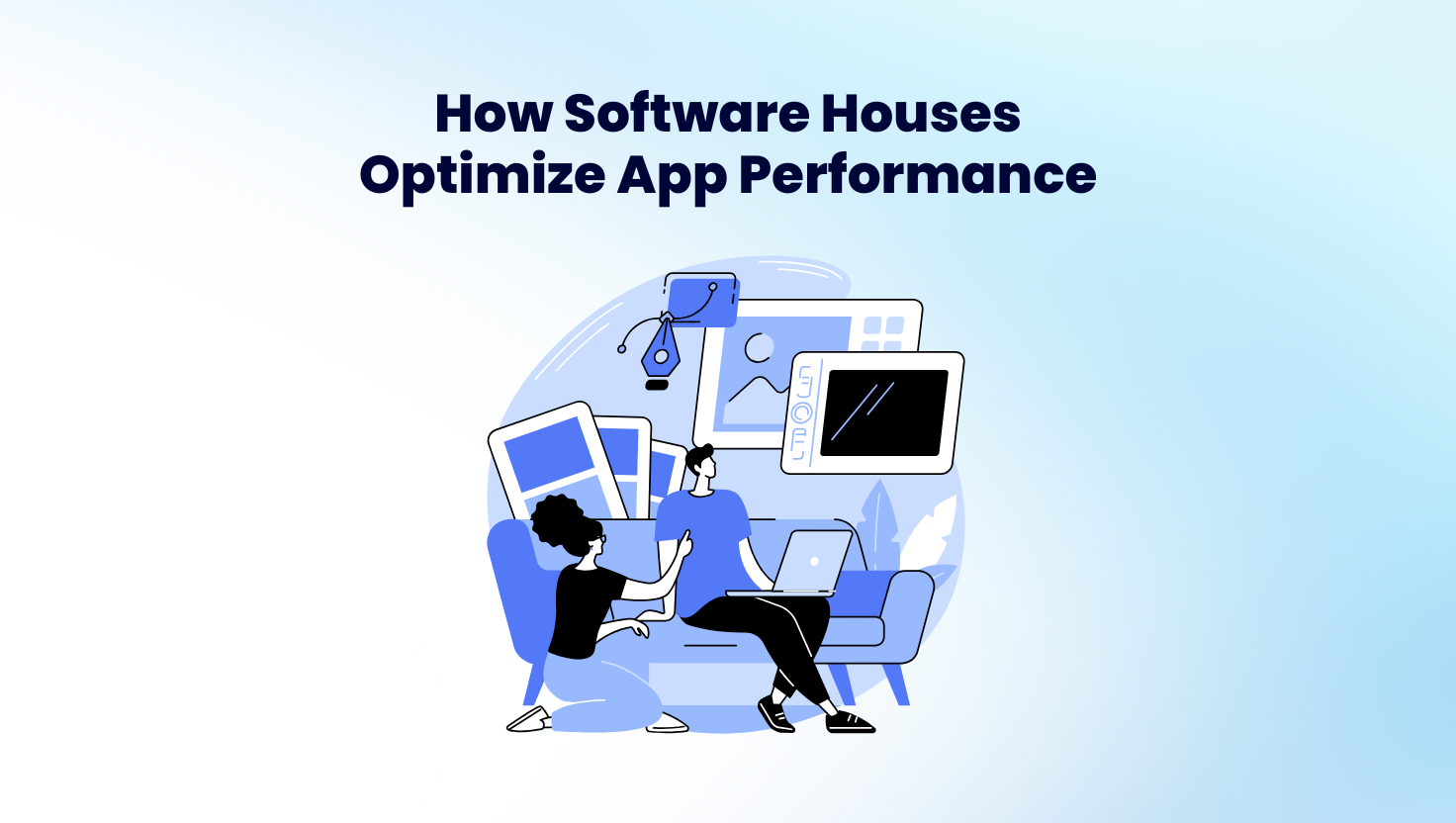
28 Mar How Software Houses Optimize Performance for Web & Mobile Apps
As businesses increasingly rely on web and mobile applications to engage with customers, performance optimization has become a critical factor in software development. Slow, unresponsive applications can drive users away, negatively impacting user experience and business growth. Software houses play a key role in ensuring that applications are optimized for speed, scalability, and efficiency. This article explores the strategies software houses use to enhance performance for web and mobile applications.
1. Efficient Code Optimization
Writing clean, efficient code is the foundation of a high-performance application. Software houses prioritize best coding practices, such as minimizing redundant code, using efficient algorithms, and leveraging frameworks that enhance performance.
Techniques Used:
- Code minification and compression
- Asynchronous programming to improve load times
- Using lightweight libraries and frameworks
Example: React and Vue.js help developers build fast, interactive user interfaces by leveraging a virtual DOM to reduce re-rendering.
2. Leveraging Content Delivery Networks (CDNs)
CDNs distribute content across multiple servers worldwide, ensuring that users receive data from the nearest location. This significantly reduces latency and improves page load speeds.
Benefits:
- Faster content delivery
- Reduced server load
- Enhanced security with DDoS protection
Example: Cloudflare and Akamai provide robust CDN services to optimize web performance and security.
3. Implementing Caching Strategies
Caching reduces the need for redundant data retrieval by storing frequently accessed content locally or on the server.
Common Caching Methods:
- Browser caching
- Server-side caching
- Database query caching
Example: Redis is widely used for caching database queries, significantly reducing the load on backend systems.
4. Database Optimization
Optimized database performance ensures fast data retrieval, reducing application latency.
Best Practices:
- Indexing for faster queries
- Normalization to avoid data redundancy
- Using NoSQL databases for handling large-scale unstructured data
Example: MongoDB and PostgreSQL are commonly used for scalable and high-performance database solutions.
5. Scalable Infrastructure with Cloud Computing
Cloud platforms offer scalable and flexible environments that adapt to traffic spikes without compromising performance.
Key Approaches:
- Auto-scaling to handle demand surges
- Load balancing for distributing network traffic
- Serverless computing to execute functions on demand
Example: AWS Lambda and Google Cloud Functions allow applications to scale dynamically based on usage.
6. Progressive Web Applications (PWAs) for Faster Mobile Performance
PWAs provide app-like experiences in web browsers with improved speed and offline functionality.
Advantages:
- Faster load times
- Reduced data usage
- No need for app store installations
Example: Twitter Lite, a PWA version of Twitter, offers a lightweight and fast mobile experience with offline capabilities.
7. Optimizing Front-End Performance
Front-end performance optimization ensures smooth interactions and faster rendering for users.
Techniques:
- Lazy loading for images and videos
- Code splitting for reducing initial load time
- Using CSS animations instead of JavaScript-based animations
Example: Google’s Lighthouse tool helps analyze and improve front-end performance.
8. Security and Performance Balance
Security measures should not compromise speed. Software houses implement lightweight but effective security protocols.
Methods:
- HTTPS encryption for secure data transfer
- Optimized authentication mechanisms (OAuth, JWT)
- Web application firewalls (WAF) to prevent threats
Example: Okta provides secure authentication solutions with minimal performance impact.
9. Continuous Monitoring and Performance Testing
Performance optimization is an ongoing process. Software houses use automated testing and real-time monitoring tools to ensure optimal performance.
Monitoring Tools:
- Google PageSpeed Insights
- New Relic for real-time performance tracking
- Apache JMeter for load testing
Example: Netflix continuously monitors server and network performance to provide seamless streaming experiences.
10. Mobile-First Design Approach
A mobile-first approach ensures that web applications are optimized for mobile devices before being adapted for desktops. This is essential as mobile users now outnumber desktop users.
Benefits:
- Improved user experience on smaller screens
- Faster load times for mobile users
- Better search engine ranking
Example: Airbnb redesigned its website with a mobile-first approach, resulting in improved engagement and conversions.
11. Efficient API Management
APIs play a crucial role in connecting different software components. Efficient API management optimizes communication between the front end and back end.
Best Practices:
- Using RESTful and GraphQL APIs for optimized data fetching
- API rate limiting to prevent server overload
- Implementing API gateways for better security and performance
Example: Stripe uses optimized API management to provide seamless and fast payment processing across web and mobile platforms.
12. Edge Computing for Reduced Latency
Edge computing moves data processing closer to the user, reducing the need for requests to travel to distant servers.
Advantages:
- Faster response times
- Reduced bandwidth usage
- Improved reliability
Example: CDNs like Cloudflare use edge computing to cache and process requests closer to users, reducing latency.
13. A/B Testing for Performance Optimization
A/B testing helps software houses analyze different versions of an application to determine which performs better.
Key Aspects:
- Testing UI/UX changes for performance impact
- Evaluating different content delivery methods
- Measuring loading speeds and conversion rates
Example: Facebook frequently conducts A/B testing to optimize its feed algorithm and UI performance.
Conclusion
Optimizing web and mobile applications requires a combination of efficient coding, infrastructure scaling, security measures, and continuous monitoring. Software houses leverage various strategies to ensure that applications remain fast, reliable, and scalable. By partnering with a trusted software house like PT. KDN, businesses can enhance application performance and provide exceptional user experiences.
Looking to optimize your web or mobile app performance? Click here to connect with our experts at PT. KDN and explore tailored solutions for your business.


Sorry, the comment form is closed at this time.